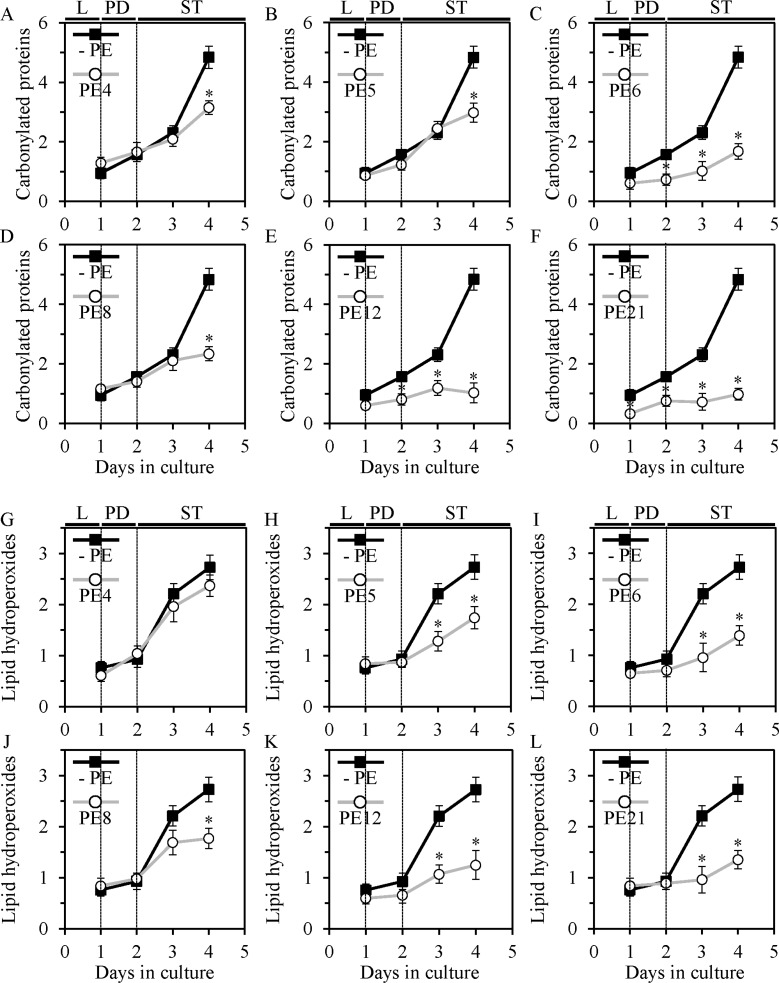Figure 8. PE4, PE5, PE6, PE8, PE12 and PE21 delay an age-dependent rise in the extent of oxidative damage to cellular proteins in chronologically aging yeast grown under non-CR conditions. PE5, PE6, PE8, PE12 and PE21, but not PE4, have similar effects on the extent of oxidative damage to membrane lipids.
WT cells were grown in the synthetic minimal YNB medium initially containing 2% glucose, in the presence of a PE or in its absence. Carbonylated cellular proteins (A–F) and oxidatively damaged membrane lipids (G–L) were determined as described in Materials and methods. Age-dependent changes in the concentrations of these oxidatively damaged macromolecules within chronologically aging WT cells cultured under non-CR conditions on 2% glucose with or without 0.5% PE4 (A and G), 0.5% PE5 (B and H), 1% PE6 (C and I), 0.3% PE8 (D and J), 0.1% PE12 (E and K) or 0.1% PE21 (F and L) are shown; data are presented as means ± SEM (n = 2–4; *p < 0.05; the p values for comparing the means of two groups were calculated with the help of the GraphPad Prism statistics software using an unpaired two-tailed t test). Abbreviations: Logarithmic (L), post-diauxic (PD) or stationary (ST) growth phase.

